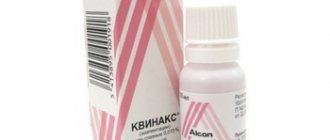ICD-10 code
Redness of the eye and the appearance of blood on its tissues are most often caused by damage to small vessels.
Depending on the location of the affected vessel, the type of hemorrhage is determined:
- Hyphema. It is recognized by the location of the lesion between the iris and cornea. The main cause is blunt force trauma. Characteristic symptoms include pain and blurred vision. Experts recommend urgently seeking medical help.
- Subconjunctival . This type of hemorrhage can develop without obvious reasons. The vessels of the eye mucosa are affected. Most often, the pathology resolves spontaneously.
- Hemophthalmos. The focus is the vitreous body inside the organ of vision. Characteristic signs of eye damage are severe fogginess and, in some cases, loss of vision. This condition requires immediate attention to the clinic due to the possible complete loss of visual function.
- Retinal hemorrhage. The retina is a very sensitive tissue. Even minor bleeding can lead to significant deterioration of vision and the development of retinopathy.
This category of pathologies is included in the International Classification of Eye Diseases MBK-10. In the section “other diseases of the conjunctiva” there is a mention of subconjunctival hemorrhage (code H11.3).
Classification
Hyposphagma
The spot has different sizes and shapes.
Hemorrhage into the white of the eye is characterized by the fact that it is clearly visible in the form of a red spot in the conjunctival area. After hemorrhage in the sclera of the eye has been established, the causes and treatment are determined by the ophthalmologist individually.
Hyphema
Blood entering the anterior chamber of the eye may be of traumatic or pathological origin. It is divided into several degrees of severity, which are determined by the blood level:
- Grade 1 – the chamber is approximately 30% filled, the pupil is completely visible.
- 2nd degree - filling reaches 50%, the upper level of blood reaches half of the pupil, in a person’s lying position, vision deteriorates sharply, up to complete absence (the person can only determine the light source).
- 3rd degree – blood filling reaches 75%, the pupil is completely hidden.
- Grade 4 – the entire volume of the anterior chamber of the eye is filled with blood.
Degrees of hyphema.
Treatment is conservative or surgical.
Hemophthalmos
The presence of blood in the vitreous body (sometimes called hemorrhage in the eyeball) occurs due to exposure to various injuries or diseases. It is possible to suspect a pathological condition based on the subjective sensation in a patient who complains of the appearance of a “red veil” before the eyes. It is impossible to see bleeding into the vitreous body with the naked eye.
The retina refers to the receptor part of the eye. It is localized behind the vitreous body and includes specific cells that, in response to exposure to light, react with the formation of a nerve impulse. Depending on the shape and location, there are several types of hemorrhage:
- The streak-like form is a slight change with blood on the retina of the eye, which is localized in the thickness.
- Round shape - the lesions have a clear round shape, they are localized deep in the retina.
- Preretinal hemorrhage of the eye - the change is located in the space between the vitreous body and the retina; it can have different shapes and sizes.
- Subretinal type - blood is localized under the retina directly in the area of the blood vessels.
Occurs in the transparent elastic layer, the conjunctiva. Between the outer shell and the sclera there is a space that is filled with blood from ruptured vessels. The effusion occurs due to injuries, operations, congenital or acquired fragility of blood vessels. More often, hyposphagma appears from overexertion, a surge in pressure and goes away on its own within 2-3 days.
Hemophthalmos
Spillage of blood in the vitreous body. A healthy structure resembles a transparent gel that allows light to pass from the lens to the retina. When the gel is filled with blood, it prevents light from reaching the retina. The person sees worse or loses visual ability.
Myopic people are more prone to ruptured blood vessels in the vitreous.
Types of hemophthalmos:
- total - loss of transparency by more than ¾ as a result of injury;
- subtotal - the vitreous body is filled with blood by at least a third, maximum by ¾, occurs in diabetes;
- partial - hemorrhage covers less than a third of the space.
Hyphema
Hemorrhage into the anterior chamber of the eye. The transparent dome of the cornea covers the iris and lens. The dome space is filled with intraocular fluid. When a vessel ruptures, moisture mixes with blood. The anterior chamber is completely or partially filled. The degree of rupture depends on the depth of penetrating, non-penetrating and surgical injuries. The hyphema settles at the bottom of the chamber. Vision partially deteriorates or the person goes completely blind.
Hyphema fills the chamber into 4 levels:
- takes up less than a third of the volume;
- half;
- more than half;
- the hyphema completely fills the volume of the chamber.
The iris becomes red with hyphema. At stage 4, it is not visible as the cornea turns into a black blood spot in the eye.
Retinal
Hemorrhages from ruptures of retinal vessels. Also dangerous for vision loss.
- Preretinal - a hematoma occurs between the retina and the vitreous body, larger in size than the head of the optic nerve;
- Intraretinal - appear due to damage to the retinal circulatory system of the retina. The appearance of hematomas indicates their location. The stripes are in the top layer, and the circles are in the middle;
- Subretinal - located behind the retinal vessels.
Hematomas are distinguished by the nature of their spread: extensive and small, unilateral and bilateral. Multiple vascular ruptures accompany systemic diseases. Unilateral rupture of the vessel is a consequence of mechanical damage.
Causes
The main provoking factor is rupture of the vascular walls.
This occurs under the influence of endogenous and exogenous processes of a local or systemic nature.
Ophthalmohypertension
A condition in which there is an increase in blood pressure inside the eye. Pathology can have a short-term effect or manifest itself in a chronic form.
A sharp increase in IOP is associated with excessive physical exertion, severe coughing, hysterical laughter, and vomiting. In children, intraocular pressure increases due to prolonged crying.
Chronic diseases that provoke hemorrhage include: hyperthyroidism and arterial hypertension.
Mechanical damage
This concept refers to injuries received from blows, falls, and burns. A solid or particle entering the organ of vision can damage the vascular wall.
Sometimes hemorrhage occurs after intense rubbing of the eyes.
Often, with a head injury, the vessels of the ciliary body and iris burst, and blood enters the sclera and retina.
Eye contusions
With traumatic brain injuries, subconjunctival hemorrhage is often recorded, accompanied by contusion of the eyeball.
Violation of blood composition and rheological properties of blood
The likelihood of vascular rupture increases with increasing blood viscosity.
The rheological properties of blood change when taking certain medications (antiplatelet agents, anticoagulants) or due to blood diseases (coagulopathy, anemia).
General diseases
Diseases such as diabetes mellitus, atherosclerosis, hypertension, and systemic vasculitis can cause hemorrhage in the eye.
Other reasons for bleeding in the eye include:
- prolonged use of blood thinning medications;
- after surgery;
- acute attack of glaucoma.
In babies, hemorrhage in the eye is caused by the following reasons: asphyxia of a traumatic or violent nature, as well as acute deficiency of ascorbic acid.
Possible diseases
There are certain diseases that can cause eye hemorrhages. There are quite a lot of them:
- oncological neoplasms;
- pathology of the iris;
- inflammation of the eye blood vessels;
- hypertension;
- atherosclerosis;
- diabetes.
Tumors that arise on the eyeball or internal structures of the eye can deform blood vessels, which leads to their destruction. Diseases of the iris and inflammation of blood vessels, in some cases leading to thinning of the capillary walls. The vessel loses elasticity and bursts. Increased blood pressure due to hypertension, atherosclerosis and diabetes mellitus are common causes of intraocular hemorrhage.
Tumors arising on the eyeball
Therefore, when diagnosing such a pathology, doctors of other specializations may be involved in the treatment of the patient to treat the underlying disease.
You should not self-medicate and change doctor’s prescriptions yourself or stop the prescribed course of treatment ahead of schedule.
Symptoms
With subconjunctival hemorrhage, only local redness of the tissue is most often observed.
Occasionally there may be pain if a large vessel is damaged.
The extensive bleeding process is accompanied by a feeling of pressure on the organ of vision. In this case, the blood spreads over almost the entire protein surface.
The blood stain on the whitish sclera has irregular outlines. Its dimensions depend on the stage of the process.
Possible complications
The appearance of a blood stain on the white is most often not a sign of a serious illness.
There is no danger to vision if the effect occurs infrequently. Complications are rare, but it should be borne in mind that they are possible .
A large blood stain is a favorable environment for the inflammatory process and infectious lesions.
Therefore, the risk of developing pathologies such as:
- keratitis;
- conjunctivitis;
- blepharitis;
- dry eye syndrome;
- xerophthalmia.
There are cases when the iatrogenic mechanism leads to the development of endophthalmitis and sepsis.
When blood penetrates into the anterior chamber of the eye or the vitreous body, visual function deteriorates.
Treatment
Classic treatment involves the use of eye drops that eliminate redness caused by hemorrhage. Medicines are selected based on the nature of the disease and the extent of blood formation. The presence of glaucoma and cataracts requires only surgical intervention.
Treatment of hyposphagma
If hemorrhage is detected in the sclera, the problem is eliminated with vasoconstrictor eye drops.
To stop the outpouring of blood from a damaged bloodstream, drops are effectively used:
- Visine. Vasoconstrictor eye drops, the effect of which is due to the vasoconstrictor effect of their active component tetrizoline on blood vessels. The product effectively relieves swelling of the conjunctiva, redness, and increased tearing. It is used by instilling 2-2 drops into the conjunctival sac. Daily frequency of use is up to 3 times.
- Naphthyzin. A well-known remedy in the form of drops. The drug has a vasoconstrictor effect through the main active ingredient naphazoline. To relieve the effects of hemorrhage, you need to drip 2-3 drops into the eye 3 times a day, with an interval of 4 hours between each application. The medicine is not recommended for use for more than 5 days, as it is addictive and, as a result, reduces the effect of the medicine.
- Octilia. Vasoconstrictor drops containing the main component - Tetrizoline hydrochloride. The medicine relieves the symptoms of hemorrhage in the form of hyperemia of the mucous membranes and redness. Apply the product conjunctivally, 2–2 drops, 2–3 times a day.
These drugs will help prevent the spread of blood released from the vessel throughout the internal media of the eye.
For small formations in the conjunctiva, treatment is not required. If they are accompanied by painful symptoms, an ophthalmologist is visited and medications are prescribed to relieve painful symptoms.
Painless hemorrhages are relieved by the use of eye drops that eliminate the accompanying redness. Taking such drugs should be started in cases where hemorrhage does not resolve on its own for more than 2 weeks.
Treatment of hyphema
Treatment of hyphema is aimed at eliminating etiological pathologies and infectious diseases. The use of drugs that improve blood rheology is urgently discontinued. Harmful components in the form of tobacco and alcohol products, which have a negative effect on the strength of the walls of blood vessels, are excluded from consumption.
Hemorrhages in the eye, the cause of which is associated with a burst vessel and effusion of blood in the anterior chamber of the eye (hyphema), excludes the use of specific groups of medications. For example, the use of non-steroidal anti-inflammatory drugs, apiin, is contraindicated.
Resorption of small blood formations localized behind the cornea is independent. It is accelerated with the assistance of drops of a 3% solution of potassium iodide with the involvement of medications that reduce the internal pressure of the eye.
Small accumulations of blood between the cornea and iris are eliminated through the use of ophthalmic drops. Extensive filling of this area of the eye is removed surgically using laser coagulation.
How to treat hemophthalmos
Modern ophthalmology does not have methods for conservative treatment of hemophthalmos. Today, to cope with the disorder, preventive measures and recommendations will help to prevent re-hemorrhage and resorption of existing formations:
- refusal of physical activity;
- compliance with bed rest with the head positioned above the body;
- taking vitamins C, PP, K, B and vascular-strengthening drugs;
- eye drops - potassium iodide.
Some cases cause the lack of effectiveness of conservative therapy. For example, for pathologies such as retinal detachment, vitrectomy is required - a surgical operation to partially or completely remove the retina.
Treatment for retinal hemorrhage
Given the danger of complete loss of vision due to retinal hemorrhage, treatment of this disorder is carried out inpatiently.
For a patient in clinical conditions, an ophthalmologist prescribes medications from various groups:
- corticosteroids (Betamethasone, Hydrocortisone);
- angioprotectors (Agapurin, Flexital);
- non-steroidal anti-inflammatory drugs (Clodifen, Nimesil);
- diuretics (Furon, Indipam);
- vitamin complexes including vitamins C, A, E.
In case of extensive hemorrhage, along with conservative therapy, surgical treatment in the form of laser coagulation of the retina is involved in the fight.
First aid for bleeding from a blow
As part of first aid for internal eye hematoma caused by injury from a blow, a cold compress helps well. To do this, several pieces of ice need to be wrapped in a sterile bandage and applied to the injured eye.
The duration of the compress is 2 hours. The fact is that cold constricts blood vessels, so this method helps relieve swelling and stop the flow of blood from the damaged vessel.
How long does it take for a hemorrhage to last?
If there is a hemorrhage in the eye, it would be a good idea to see an ophthalmologist. Although the pathology most often disappears spontaneously after 3-15 days, it is worth eliminating risk factors and preventing the development of complications.
Small blood spots disappear within 5-8 days. Their color changes gradually towards lightening.
After about a week, a yellowish or greenish tint appears. Serious violations reveal themselves as recurrent effects. Therefore, frequent hemorrhages in the eye are a reason to consult an ophthalmologist.
What you can and cannot do if you have a hemorrhage in the eye
The speed of recovery depends on various factors, but the main one is adequate first aid.
What to do in case of hemorrhage of a vessel:
- if the bloody spot is located between the sclera and the conjunctiva, there is no need to worry, the problem will disappear on its own in a few days, there is no need to use drugs;
- if the cause is excessive physical activity, you need to exclude active activities for a while;
- If you have high blood pressure, you should consult an ophthalmologist.
It is sometimes difficult to independently identify the degree of vascular damage, so it is advisable to seek help from a highly specialized specialist.
Wrong actions can provoke a number of complications, so it is important to know what not to do in case of hemorrhage:
- rubbing your eyes and even touching them due to the risk of increased bleeding;
- apply warm lotions;
- wash the organs of vision;
- use questionable recipes for alternative medicine;
- wear contact lenses.
It also happens that hemorrhage occurs in both organs of vision. What this means cannot be immediately determined, so there is an urgent need for a clinical examination.
You should not hesitate to visit a doctor even if there is extensive bleeding, which is observed not only in the eye, but also in the gum at the same time. Severe pain is also alarming.
Ignoring warnings can lead to a worsening of the situation, including loss of vision.
Possible consequences
The consequences of hemorrhage depend on its type:
- subconjunctival may occur arbitrarily and not have a serious continuation for the patient (if the pathology occurs frequently, examination is necessary);
- for all other forms there is a danger of impaired refraction and even complete loss of vision;
- Cataracts or glaucoma may occur as a complication.
If signs of any type of hemorrhage are noticed, under no circumstances should you rub your eyes, use contact vision correction devices, or engage in self-medication.
Floaters before eyes (photo)
How to treat and what drops are best to use
The first desire that arises when identifying a bloody spot on the eye is how to remove it quickly. This is especially true for women, for whom the issue of aesthetics plays a fundamental role.
Treatment is selected taking into account the degree of damage.
In mild cases, drug therapy is not prescribed. A cosmetic defect can be eliminated using folk remedies.
If the third degree of pathology is detected, the help of a doctor is required. Only a specialist can figure out the cause of the hemorrhage. If it lies in the dysfunction of internal organs, treatment is aimed at eliminating the underlying disease.
If the bloody spot grows or relapses occur, the ophthalmologist recommends drug therapy.
Drops for rapid resorption of bruises:
- Emoxipin;
- Emoxy-Optic;
- Vixipin.
Agents from the group of angioprotectors for correcting blood microcirculation and reducing the permeability of vascular walls:
- Troxevasin;
- Rutin;
- Doxium;
- Etamzilat.
To stabilize cholesterol and lipid levels and normalize blood composition, the following drugs are recommended:
- Heparin;
- medicines containing iodine .
They are also used to dissolve blood stains.
The need for antibacterial agents arises when there is an infectious lesion or signs of an inflammatory process are detected. Medicines are prescribed by the attending physician, taking into account the type of infection.
- It would not be superfluous to supplement therapy with vitamins, which also help strengthen the vascular wall. The vitamin complex should include: ascorbic acid and flavonoids (vitamin P).
- The consequences of serious injuries and pathologies sometimes require drastic solutions. To remove a bruise from the anterior chamber or vitreous, surgical intervention is performed and laser coagulation of the retina is prescribed.
- Any drugs are prescribed only after diagnostic measures have been carried out. You should not try to remove a cosmetic defect yourself, as this can lead to deterioration in visual function.
Folk remedies
On various forums there are folk recipes for hemorrhage in the eye.
Only an ophthalmologist can determine the causes and treatment after examination and diagnostic measures. Therefore, the use of meat, urine, and various infusions of medicinal herbs is considered an empty and unsafe . For example, urine contains an aggressive environment and moisture.
According to the recommendations of experts, it is necessary to exclude washing the affected organ of vision and exposure to irritants. After such help, it is clear why the condition worsens.
What can be done when identifying a bloody spot on the albumen is to moisten the conjunctiva with drops that have the properties of artificial tears. They eliminate discomfort, thereby facilitating the recovery process.
To quickly resolve the hematoma, it is recommended to ingest a tincture of arnica flowers .
They are crushed and infused in alcohol for 3-4 days (proportion 1:10). After filtering, the medicine is mixed with water or milk in the ratio: 35 drops of tincture per 200 ml of liquid. It is recommended to use the product three times a day.
Other traditional medicine recipes, such as cabbage juice, aloe, etc., are allowed to be used only after consultation with your doctor.
Preventive actions
There are no specific measures aimed at preventing the formation of hemorrhage in the eye.
Among the general recommendations regarding the preservation of the visual organs, the following stand out:
- avoiding intense physical activity, especially lifting objects that exceed your own weight;
- If problems with visual function are identified, consult a doctor to diagnose the pathology and undergo timely treatment;
- make an appointment with an ophthalmologist after receiving an injury to examine the eyeball (even if there are no signs of damage to the eye).
When developing a menu, pay attention to products containing ascorbic acid, vitamin P, and iodine. This will help strengthen the vascular walls and increase their elasticity.
At least twice a year, take a course of vitamin complexes containing minerals and trace elements that improve blood microcirculation.
Diagnostics
Hemorrhage into the eye cavity is detected during an ophthalmological examination. In the vitreous body, which is normally transparent, the following may be detected: individual blood clots that float freely in the eye cavity, if the pathology is mild, or the cavity of the eyeball is filled with blood, with the impossibility of examining the fundus of the eye, if the pathology is severe.
Additional research methods include ultrasound, which determines the severity of hemorrhage and allows you to monitor the progress of treatment.











